This article was co-authored by Carrie Noriega, MD and by wikiHow staff writer, Jessica Gibson. Dr. Noriega is a Board Certified Obstetrician & Gynecologist and medical writer in Colorado. She specializes in women’s health, rheumatology, pulmonology, infectious disease, and gastroenterology. She received her MD from the Creighton School of Medicine in Omaha, Nebraska and completed her residency at the University of Missouri - Kansas City in 2005.
There are 9 references cited in this article, which can be found at the bottom of the page.
wikiHow marks an article as reader-approved once it receives enough positive feedback. In this case, 90% of readers who voted found the article helpful, earning it our reader-approved status.
This article has been viewed 579,477 times.
Women often have small, painless cysts that go away on their own (inclusion cysts). But, if you have sac-like bumps or lumps around the vagina or vulva, you may have epidermal cysts. These are usually painless, especially when they're small. Vaginal cysts can be caused by trauma, surgery, childbirth, or unknown causes. You should monitor cysts since they can become painful and irritating, especially if they become infected.
Things You Should Know
- Avoid irritating or rubbing the cyst, even while bathing—try a sitz bath or a gentle soak in the tub to keep the area clean.
- Use home remedies like an apple cider vinegar soak or warm compress to soothe the cyst. OTC pain relievers can help with pain until it clears up.
- See a doctor if you experience pain or other symptoms of infection, like tender lumps, redness or swelling, painful intercourse, or a fever.
Steps
Diagnosing and Monitoring the Cyst
-
1Consider what kind of cyst you have. Most vaginal cysts are called inclusion cysts. These small, painless cysts usually go unnoticed and clear up on their own. If you have cysts that you can see on either side of your vaginal opening, these may be Bartholin's gland cysts. Normally, the glands secrete fluids that lubricate the vaginal lips and opening. But, these can become blocked, creating fluid-filled cysts.[1] Less common types of cysts that develop inside the vagina include:
- Gartner's duct cysts: these form during fetal development and they should disappear after birth. If cysts develop later in life, an MRI is usually needed to diagnosis them.
- Mϋllerian cysts: these develop from fetal structures that should disappear after birth, but often don't. These cysts are filled with mucus and can develop anywhere inside the vaginal walls.
-
2Watch for signs of an infection. While most cysts won't cause any discomfort, you may notice signs that the cyst has become infected. It's important to pay attention to these symptoms so you can get immediate medical attention. Signs of infection include:[2]
- A lump near the vaginal opening that is tender or painful
- Redness and swelling around the lump
- Discomfort when walking or sitting
- Painful intercourse
- Fever
Advertisement -
3Know when to see your doctor. You should call your doctor or gynecologist if you have any symptoms of infection or if the cyst becomes painful. A normal bacterial Infection or sexually transmitted infection can make the cysts uncomfortable. These require medical treatment. You should also let your doctor know if you have recurrent cysts, even if home treatments work. Recurrent cysts might need to be surgically treated.
- If you're over 40 years old and have Bartholin Gland cysts, you need to have the cyst removed. Your doctor will probably want to have it tested for cancer, though this is extremely rare in a Bartholin gland.[3]
-
4Follow your doctor's treatment recommendation. In addition to testing the cyst for cancer, your doctor may want to treat infected cysts. Treatment can involve draining the Bartholin's cyst by making an incision, then keeping it open with sutures or packing, which will be removed after a few days. A tube may also be used to drain the cyst. Your doctor may want to surgically remove a cyst if it returns, is large, or is painful.
- Remember that most vaginal cysts don't need treatment. Instead, they can reabsorb on their own. If they don't resolve on their own, these cysts remain small and painless.
-
5Get regular gynecological exams. If you have a cyst removed, you should have the area checked periodically to see if the cyst returns. It's a good idea to be in the habit of getting regular gynecological exams anyway. These can catch cervical cysts and cancer early. The American College of Physicians recommends that women of average risk for cervical cancer get pap smears and exams according to this new schedule:[4]
- Ages 21 to 29: once every three years
- Ages 30 to 65: once every three years (or an HPV and Pap smear every five years)
- Over age 65: none are needed if recent tests come back normal
Treating a Vaginal Cyst at Home
-
1Soak in a sitz bath. Fill the sitz bath with warm water and place it over the toilet. This will allow you to sit and soak just your genital area. Add 1 to 2 tablespoons of epsom salts in the water and stir the mixture till the salts dissolve. Sit on the bath for 10 to 20 minutes, twice a day. You should do sitz baths three or four days or till the cyst improves.[5]
- You can buy a sitz bath at a pharmacy or medical supply store. If you don't have a sitz bath, you could also just run a few inches of water in your bathtub.
-
2Use an apple cider vinegar (ACV) soak. More research is needed, but ACV can be used to try to reduce the size and swelling of vaginal cysts. Either run a sitz bath and add 1 cup of ACV or you can soak a cotton ball or swab with ACV. Apply the soaked cotton ball or swab directly to the cyst and hold it there for 30 minutes twice a day until you notice swelling reduce.
- While ACV is a popular home remedy, scientists caution against relying on vinegar as a medicinal treatment.[6]
-
3Use a warm compress. Fill a hot water bottle with hot water and wrap it in a clean towel. Place this against the cyst to provide some pain relief. You might also try applying a heat pack, so long as you keep another cloth between the pack and your skin. Take care not to burn the delicate tissue in the vaginal area.
- You can also dip a flannel or cotton cloth in hot water, wring the water out, and apply it directly against the cyst.[7]
-
4Apply an aloe vera mixture. Mix 1 to 2 tablespoons of aloe vera gel with 1/4 to 1/2 teaspoon of turmeric powder. Stir until the mixture forms a paste. Use a cotton ball, tampon, or swab to apply the mixture to the cyst. Leave it on for 20 to 30 minutes once a day. Don't rinse or clean off the paste. Just let it run out naturally.
- You may want to wear a sanitary napkin so that the bright turmeric doesn't stain your clothing.
- Studies have shown that turmeric (curcumin) is an anti-inflammatory.[8] This can reduce the irritation caused by vaginal cysts.
-
5Take over-the-counter (OTC) pain relievers. Since it may take a few days for the cyst to clear up, you may want to take OTC pain relievers like ibuprofen or acetaminophen. If you feel severe pain that doesn't go away after taking OTC medications, contact your doctor.[9]
- Always follow the manufacturer's instructions regarding dosage and how often to take the medication.
-
6Avoid irritating the cyst. Never rub the cyst, even when cleaning or washing the area. Gentle soaks in the sitz bath or tub are enough to keep the area clean. You should never douche. Douching is unnecessary, can irritate the cyst, and is considered to be harmful to women's health in general.[10]
- Since you'll want to avoid irritating the cyst, consider using a sanitary napkin instead of a tampon, if you're menstruating.
Expert Q&A
-
QuestionHow should I prepare before getting a pap smear?
 Jennifer Butt, MDJennifer Butt, MD, is a board certified Obstetrician and Gynecologist operating her private practice, Upper East Side OB/GYN, in New York City, New York. She is affiliated with Lenox Hill Hospital. She earned a BA in Biological Studies from Rutgers University and an MD from Rutgers – Robert Wood Johnson Medical School. She then completed her residency in obstetrics and gynecology at Robert Wood Johnson University Hospital. Dr. Butt is board certified by the American Board of Obstetrics and Gynecology. She is a Fellow of the American College of Obstetricians and Gynecologists and a member of the American Medical Association.
Jennifer Butt, MDJennifer Butt, MD, is a board certified Obstetrician and Gynecologist operating her private practice, Upper East Side OB/GYN, in New York City, New York. She is affiliated with Lenox Hill Hospital. She earned a BA in Biological Studies from Rutgers University and an MD from Rutgers – Robert Wood Johnson Medical School. She then completed her residency in obstetrics and gynecology at Robert Wood Johnson University Hospital. Dr. Butt is board certified by the American Board of Obstetrics and Gynecology. She is a Fellow of the American College of Obstetricians and Gynecologists and a member of the American Medical Association.
Board Certified Obstetrician & Gynecologist
-
QuestionI have a cyst on my bikini line and it hurts. I can't get a doctors appointment till Monday so what can I do until then? Is there any cream or just a salty bath that will help?
 Carrie Noriega, MDDr. Noriega is a Board Certified Obstetrician & Gynecologist and medical writer in Colorado. She specializes in women’s health, rheumatology, pulmonology, infectious disease, and gastroenterology. She received her MD from the Creighton School of Medicine in Omaha, Nebraska and completed her residency at the University of Missouri - Kansas City in 2005.
Carrie Noriega, MDDr. Noriega is a Board Certified Obstetrician & Gynecologist and medical writer in Colorado. She specializes in women’s health, rheumatology, pulmonology, infectious disease, and gastroenterology. She received her MD from the Creighton School of Medicine in Omaha, Nebraska and completed her residency at the University of Missouri - Kansas City in 2005.
Board Certified Obstetrician & Gynecologist Cysts in the bikini line can be treated similarly to cysts discussed above. The best thing to do is soak the cyst because this can help it resolve on its own. Avoid clothing rubbing on the cyst as it can enlarge the cyst.
Cysts in the bikini line can be treated similarly to cysts discussed above. The best thing to do is soak the cyst because this can help it resolve on its own. Avoid clothing rubbing on the cyst as it can enlarge the cyst.
References
- ↑ http://www.mayoclinic.org/diseases-conditions/bartholin-cyst/basics/definition/con-20026333
- ↑ http://www.mayoclinic.org/diseases-conditions/bartholin-cyst/basics/symptoms/con-20026333
- ↑ https://www.merckmanuals.com/home/women's-health-issues/noncancerous-gynecologic-abnormalities/bartholin-gland-cysts
- ↑ http://www.health.harvard.edu/blog/expert-panel-says-healthy-women-dont-need-yearly-pelvic-exam-201407027250
- ↑ http://www.mayoclinic.org/diseases-conditions/bartholin-cyst/basics/treatment/con-20026333
- ↑ http://www.ncbi.nlm.nih.gov/pmc/articles/PMC1785201/
- ↑ http://www.nhs.uk/Conditions/Bartholins-cyst/Pages/Treatment.aspx
- ↑ http://www.ncbi.nlm.nih.gov/pmc/articles/PMC3271691/
- ↑ http://www.nhs.uk/Conditions/Bartholins-cyst/Pages/Treatment.aspx
About This Article
Most vaginal cysts clear up on their own, but if yours doesn’t go away or you have cysts on either side of your vaginal opening, try adding a tablespoon or 2 of Epsom salt to a warm bath or tub and soaking in it for 10 to 20 minutes twice a day. You can also mix a tablespoon of aloe vera with ¼ teaspoon of turmeric powder and apply the paste to your cyst. If your cyst is causing you pain, try holding a heat pack or hot water bottle to it to relieve your discomfort. If you notice a tender or painful lump near your vaginal opening, fever, redness and swelling around the lump, or discomfort when walking or sitting, seek medical attention, since these could be signs of infection. For more tips from our Medical co-author, including how to reduce the swelling of your cyst with apple cider vinegar, read on!


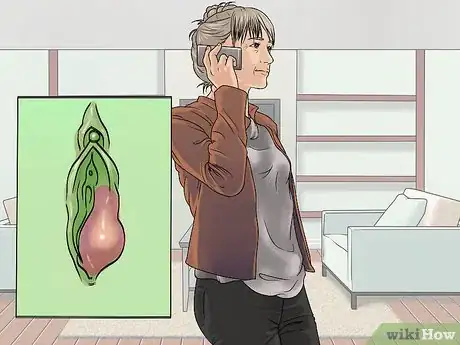




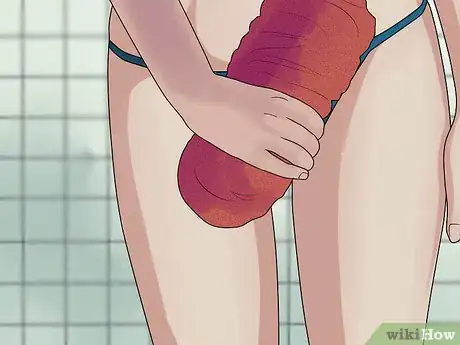

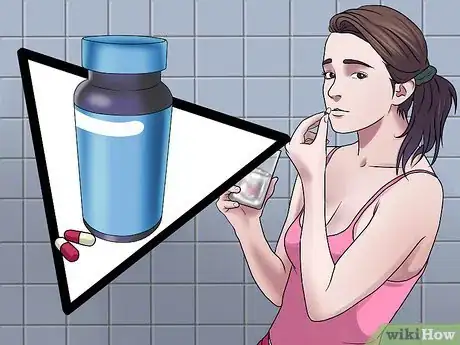

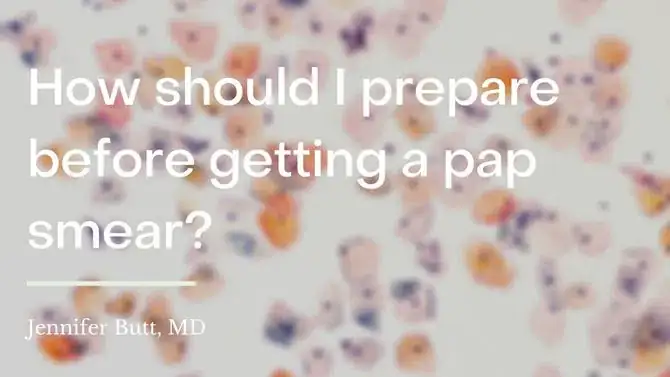

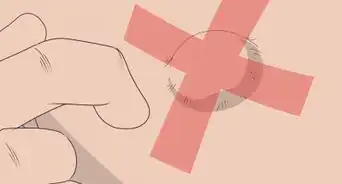




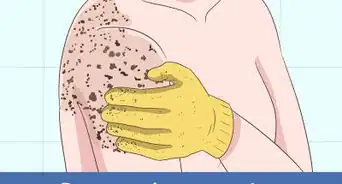



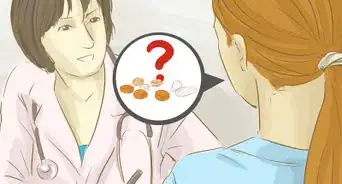


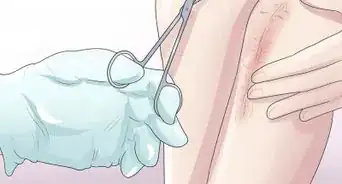







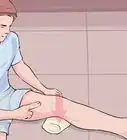























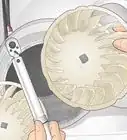













Medical Disclaimer
The content of this article is not intended to be a substitute for professional medical advice, examination, diagnosis, or treatment. You should always contact your doctor or other qualified healthcare professional before starting, changing, or stopping any kind of health treatment.
Read More...